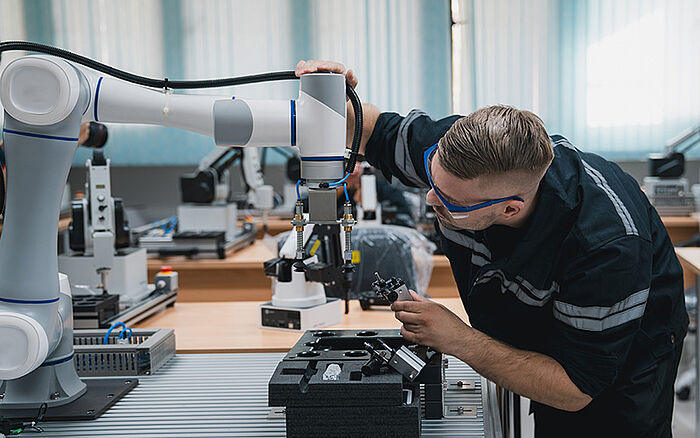
How much does a patent cost?
Every patent grant is a window to economic and technological opportunity, making the exclusive rights they afford a valuable proposition for organizations of all sizes. However, the process of obtaining a registration is often fraught with fees and costs that can be intimidating.
To minimize hurdles and maximize value, innovators should be aware of the financial commitment and craft an Intellectual Property (IP) strategy before filing a patent application. The first step to doing this is to identify where savings can be made and which expenses are worth pursuing.
If you are not already well acquainted with the patent filing process, you might be unaware that submitting an application is only one of many points along the way where fees will accrue. There is an entire life cycle that needs to be taken into account. For instance, the communication process with the relevant patent office, referred to as prosecution, can become increasingly expensive as the number of office actions grows. Additionally, maintenance payments must be made throughout the duration of the patent and may become due before a grant has been issued.
Fees during the patent life cycle
To put things into perspective, obtaining a European patent grant costs an average of €6,800 for e-filings or €6,950 for paper applications. Crucially, these figures do not include patent attorney fees, and it should be borne in mind that a legal expert's input ranges from being highly advisable to nigh obligatory for the most sophisticated inventions.

The vast majority of patent applications receive a non-final rejection after the first round of prosecution. With this office action, the applicant is given a chance to amend their filing documents or appeal the decision before a second, final rejection is handed down.
These considerations make it essential to start tracking finances before your invention is fully realized and continue following costs from then on. Before starting out on the registration process, you may wish to perform a patent search to ensure your idea is novel.
1. Research and preparation
Having patent protection across the world may seem like the ideal situation, but the added expenditure could outweigh the benefits in certain places. You will want to explore market conditions in any country that is not essential to your strategy. By way of illustration, if you have a method of manufacture that only applies to an industry that is marginal in a given country, the judicious move may be not to file there.
The local market situation is not the only factor when analyzing a potential venue. The specifics of patent law differ around the world, and an invention that might have strong patent protections in one region may have more uncertain prospects elsewhere. In Japan, for example, software patents are more readily obtainable than in other major jurisdictions such as the United States or members of the European Patent Convention (EPC).
2. Application and prosecution
The amount of money needed to file and prosecute a patent application varies widely according to a large number of details. First and foremost is the relevant IP office – its charges and payment schedule. After that, the patent type (where applicable), invention complexity and even your own business status can come into play because some fees are based on entity size. Importantly, responding to office actions, such as to amend claims or correct details, raises the final price of prosecution with or without legal advice.
There may also be service fees that are not immediately apparent, such as for the legalization of papers supporting an IP application. This is true in Saudi Arabia and the United Arab Emirates, where notarized and legalized documents are required within a certain timeframe, post-filing. Processing these documents at embassies ultimately adds to your final spend.

In some jurisdictions, the maintenance fee schedule is set according to the grant date, and in others, by the filing date. This means your first renewal payments can become due while the application is still pending.
Filing fees for patent applications can also climb quickly as the number of claims increases. In some cases, the surcharge for excess claims can outpace the basic fees of the application. As a case in point, the fee schedule at the United States Patent and Trademark Office (USPTO) lists a basic filing fee of $350 USD for utility patent applications. However, that only covers a utility patent that has a maximum of three independent claims and 20 total claims. The Office also charges $600 USD for each independent claim above three and $200 USD for each claim over a total of 20. As an invention becomes more intricate, this can easily cause filing costs to triple or quadruple. It might require a difficult conversation with your patent attorney, but paring back on the number of claims in your application might keep you from breaking the bank.
3. Maintenance
This is where inventors might stop calculating outlays, thinking that the filing fee is the main financial hurdle when securing a patent grant. However, the reality is that patents are investments that must be upheld over time, which means their long-term value comes with long-term costs. The most formulaic of these are renewal fees; while differing in price and interval across jurisdictions, they always follow set schedules. The next consideration is the cost of IP management, which may include anything from patent analysis software to attorney fees.
4. Defense
Enforcing your exclusive rights is where things get complicated. This budget represents the financial ability to safeguard patents against infringement, thereby protecting your market share and earning opportunities. Additionally, you may need to defend yourself against accusations of infringement by patent trolls or challenge invalid registrations, with the litigation process often being extremely expensive. Thankfully, awards of damages are a powerful remedy that makes patent defense an indispensable component of any maintenance policy.
Cost strategies for international patent filing
Even in the age of artificial intelligence (AI), translating a patent application into a foreign language requires a human specialist with a good deal of technical knowledge. Such expertise usually comes at a premium. One cost-effective option may be to file patents in a group of countries that share a (procedural) language, such as English or Spanish.

Patent maintenance fees tend to increase with age, meaning the biggest determinant of final cost is most likely to be how long it is retained in a given jurisdiction.
If you plan to file patent applications in multiple countries, there are legal frameworks you can take advantage of to save time and money. Not only does the Patent Cooperation Treaty (PCT) give inventors a streamlined system for filing applications in over 150 countries, but it also includes certain mechanisms that offer the potential to reduce overall spend. At the very least, the PCT system gives an applicant the ability to spread costs over a longer period, easing the pressure on budgets. Another option is a Unitary Patent from the European Patent Office (EPO), with a single grant being immediately enforceable in all participating countries, while requiring just one renewal fee.
International patent applicants may also be able to take advantage of Patent Prosecution Highway (PPH) agreements. If any patent claims are accepted by an office maintaining a PPH relationship, the applicant can pursue a fast-tracked examination of the allowed claims by partner offices. This expedited procedure may be requested without a fee and can help an applicant realize cost savings over a typical prosecution effort.
Making the most of budgets
Discretion is sometimes the better part of valor. No one files a patent application in the hopes of someday dropping it, and it is hard to let go when you are sure that you are on to a winning idea. However, not every patent application is going to end up being relevant to your business plan. The overheads of securing exclusive rights to an ancillary technology could end up draining resources from innovations that hold greater commercial promise. Even after a patent has been granted for your invention, it might be worth analyzing the savings that can be achieved by abandoning it.
Working with an experienced IP partner throughout the patent life cycle is the best way to ensure that you are employing an effective strategy. At Dennemeyer, we are dedicated to making the patent process work for organizations of all sizes and industries, winning you the greatest possible returns for your business's future.
Filed in

Swiss-type patent claims are vital for incentivizing the development of inventions directed to second medical uses and require special consideration in Brazil.

Discover the ins and outs of maintaining patents, including strategies to manage budgets, due dates and ongoing value.



